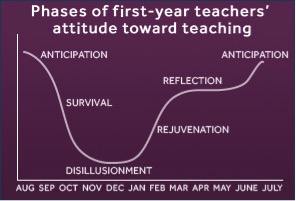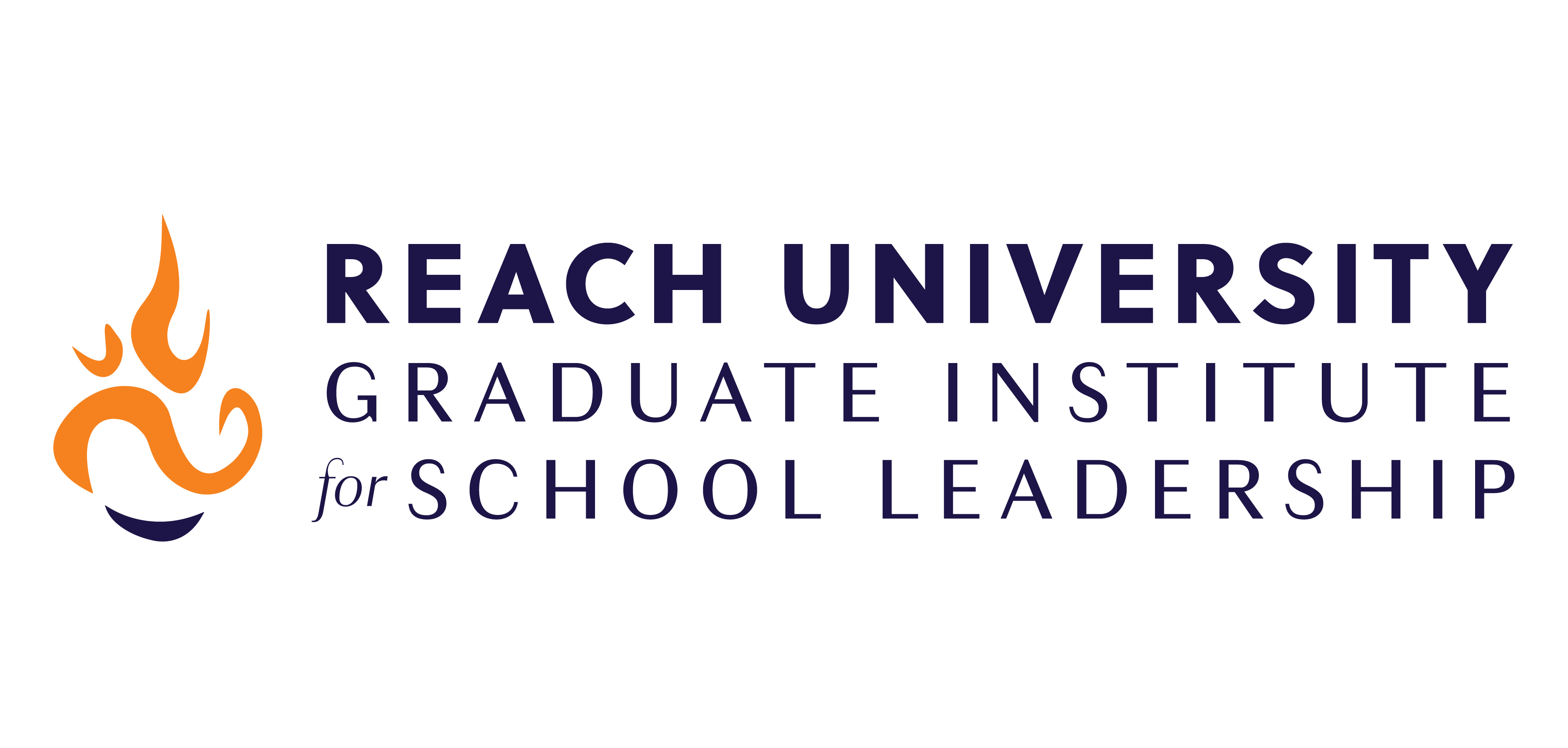Featured Article: Phases of First-Year Teachers’ Attitude Toward Teaching

The first time I saw Ellen Moir’s Phases of First Year Teaching (New Teacher Center) was when I was training to become a teacher coach/mentor. I scanned the teacher’s journey as it careened down a steep ravine and up again, all the while reflecting on my own tumultuous first year. You may be thinking, “That’s not going to happen to me”. While maybe not all new teachers go through all of these phases in exactly this way, over my years of educating and training new teachers, I have seen that many do. When the time comes, as it most likely will, with these phases in mind, perhaps you (1) won’t be so surprised and (2) can remind yourself, when the going gets tough, you are not alone.
Thus, as you continue through the school year, here are a few recommendations that you might want to consider:
Keep a journal that tracks your progress. What excites you about teaching? Why did you become a teacher, and what are your hopes and fears for this school year? A journal can be an excellent way not only to reflect on your practice, but to capture that essence of excitement so that you can later look back when you might need some inspiration or support. These days, blogging can be a great journaling platform, whether you do it for yourself or to share with others. I still find the old-fashioned pen-to-paper approach quite useful as well.
Start a new teacher group. Early in my career, I realized the importance of a support network. Though it is also essential to have support from veteran teachers, other new teachers are also a valuable resource for sharing ideas and experiences.
Backward map! As a new teacher, I realized that I had slid into the Survival phase when I relied on day-to-day, rather than long-term, planning. having lost sight of what John Dewey calls the “end-in-view”. Teaching effectively is more than just planning and implementing a good lesson. It entails framing your instruction around a larger learning goal. As such, Wiggins and McTighe’s Understanding by Design model is a must for every new teacher engaging in long-term planning. This model of backward mapping entails three steps:
1) Identify desired results. What knowledge and skills do I want my students to have?
2) Determine acceptable evidence. How will I know that they know/understand? How will they demonstate evidence of their learning?
3)Plan learning experiences. How will I plan my instruction accordingly?
In addition to the books Understanding by Design and The Understanding by Design Guide to Advanced Concepts in Creating and Reviewing Units, co-author Jay McTighe’s webiste has freely downloadable design tools and templates. http://jaymctighe.com/resources/
Additionally, here is the link to Moir’s New Teacher Center article.

